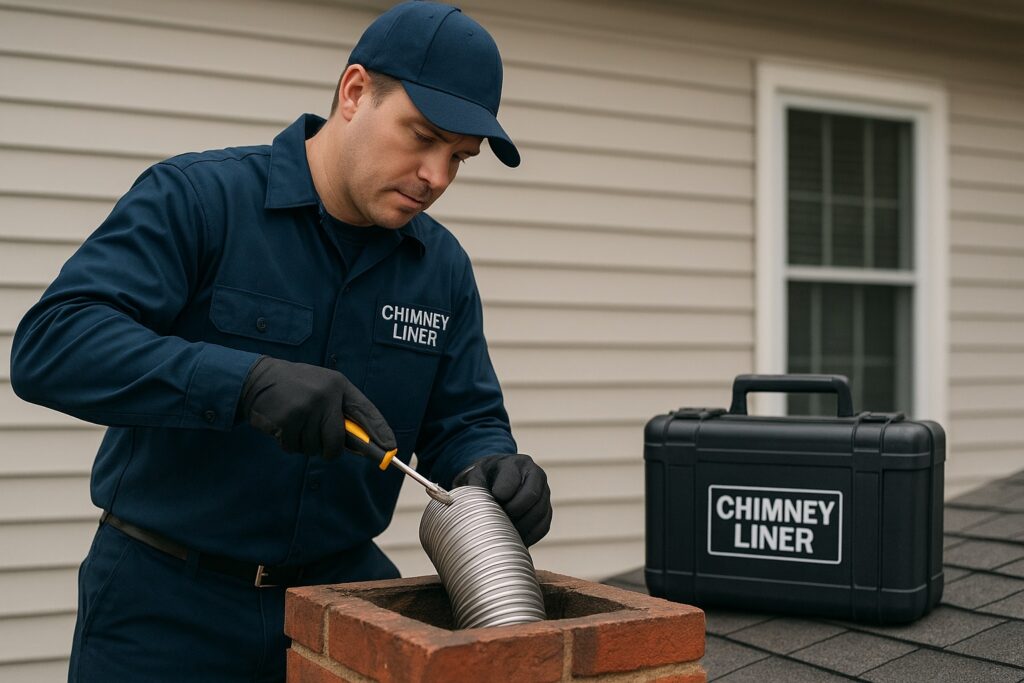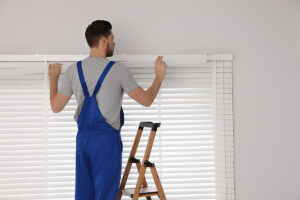
When you think about cozy nights in Camden, chances are you picture a fireplace glowing in the corner, warming up the room while the city outside stays chilly. That warm moment depends on something hidden inside your chimney a chimney liner. You don’t see it, but it quietly protects your home, your fireplace, and your family. If you’ve ever wondered what a liner actually does or why it matters, let’s break it down in a way that’s simple and easy to follow.
Why Chimney Liners Deserve More Credit
Imagine pouring hot tea into a cracked mug. The liquid would leak everywhere, right? A chimney without a proper liner is a bit like that—it lets heat, gases, and even sparks escape where they shouldn’t. Liners act like a smooth, protective sleeve inside your chimney. They keep dangerous fumes headed outside, not into your living room walls.
In Camden, with its mix of older townhouses and newer homes, liners are even more important. Many older chimneys weren’t built with liners at all, and that can lead to all sorts of problems over time, from smoky rooms to crumbling bricks.
Signs Your Chimney Might Need Attention
How do you know if your liner is doing its job? Here are some everyday clues you might notice:
-
Strange smells – If you catch a musty or smoky odor indoors, gases may be sneaking past the liner.
-
Dusty flakes – Bits of tile, clay, or cement at the bottom of your fireplace could mean the liner is breaking down.
-
Uneven heat – Your fire doesn’t seem to burn right, or smoke curls back into the room instead of flowing upward.
-
Visible wear – If you’ve peeked inside and spotted cracks or gaps, that’s a clear red flag.
Think of your liner like the tires on your car. You don’t notice them when they’re working, but once they’re worn out, you feel the difference immediately.
Choosing the Right Chimney Liner in Camden
Picking a liner isn’t about grabbing the first one you see at the hardware store. It depends on the age of your chimney, the type of fuel you burn, and how often you use your fireplace.
Here’s a quick look at the most common choices:
| Liner Type | Best For | Durability | Notes |
|---|---|---|---|
| Clay Tile | Wood-burning fireplaces | Long-lasting if maintained | Affordable but tough to repair |
| Metal (Stainless) | Gas or oil systems | Very durable | Flexible and easy to install in older chimneys |
| Cast-in-Place Cement | Versatile, any fuel | Extremely sturdy | Adds strength to aging chimneys |
If you’re unsure, a local chimney technician in Camden can guide you. What works for your neighbor’s Victorian-style townhouse might not be right for your modern home.
The Real Value of a Safe Liner
One Camden homeowner once told me, “I didn’t think about my chimney liner until smoke started staining the walls. Replacing it wasn’t just about fixing the problem it gave me peace of mind.”
That’s the bottom line: liners aren’t just about convenience. They’re about safety. They stop carbon monoxide from sneaking inside, prevent chimney fires, and keep your structure strong against heat damage. If you’ve ever had doubts about whether yours is holding up, it’s worth getting it checked.
When to Call in a Pro
Some home projects are fine for a DIY afternoon, but chimney liners aren’t one of them. A trained technician can run a camera inside your chimney, show you exactly what’s going on, and suggest the right fix. In Camden, many companies even offer annual inspections, which means you don’t have to guess you’ll know if your chimney is safe.
If your liner is beyond repair, replacement might sound expensive, but it’s a long-term investment. A well installed liner can last decades, and the peace of mind it brings is priceless.
Key Features
-
Protects your home from dangerous gases and heat.
-
Improves fireplace efficiency so your fires burn brighter and cleaner.
-
Extends the lifespan of your chimney by shielding the masonry.
Safety
Your family’s safety comes first. A damaged liner can let smoke, carbon monoxide, and sparks escape where they shouldn’t. In a city like Camden, where homes are often close together, one chimney fire can threaten more than one property. A strong, intact liner drastically reduces that risk.
Cost
The price depends on the type of liner, the size of your chimney, and how tricky the installation is. Clay tiles are usually the most budget-friendly, while stainless steel and cement options cost more but last longer. Think of it like shoes: you can grab the cheapest pair, but investing in quality means fewer replacements down the road.
Emergency Service
If you suspect a serious issue like smoke backing into your home or cracks visible in your chimney don’t wait. Many Camden chimney repair services offer emergency visits. Quick action can stop a small problem from turning into major damage.
FAQs
Q: Do all chimneys need liners?
Yes. Even if your chimney wasn’t originally built with one, adding a liner makes it safer and more efficient.
Q: How long does a chimney liner last?
Clay can last decades with care, while stainless steel and cement options often outlive the chimney itself.
Q: Can I check the liner myself?
You can look for obvious cracks or debris, but only a professional inspection will show the full picture.
Q: Is chimney liner installation noisy or messy?
It can be a bit disruptive, but most professionals clean as they go, and the process is usually done in a day.
Wrapping It Up
Chimney liners don’t get much attention, but they deserve it. Whether you’re living in a historic Camden townhouse or a brand-new build, keeping your liner in good shape means safer fires, cleaner air, and fewer repair headaches down the road. So next time you’re enjoying that warm glow from your fireplace, take a moment to appreciate the invisible shield inside your chimney it’s working hard to keep your home safe.
Read More: Chimney Sweep

